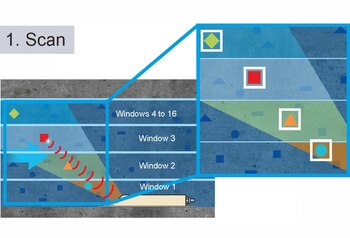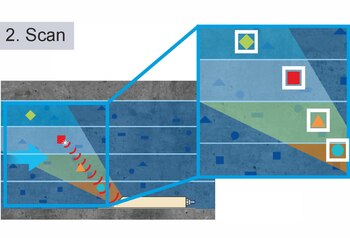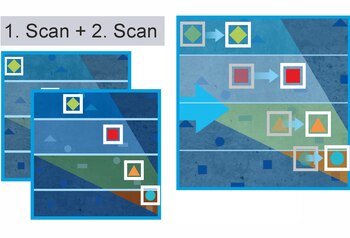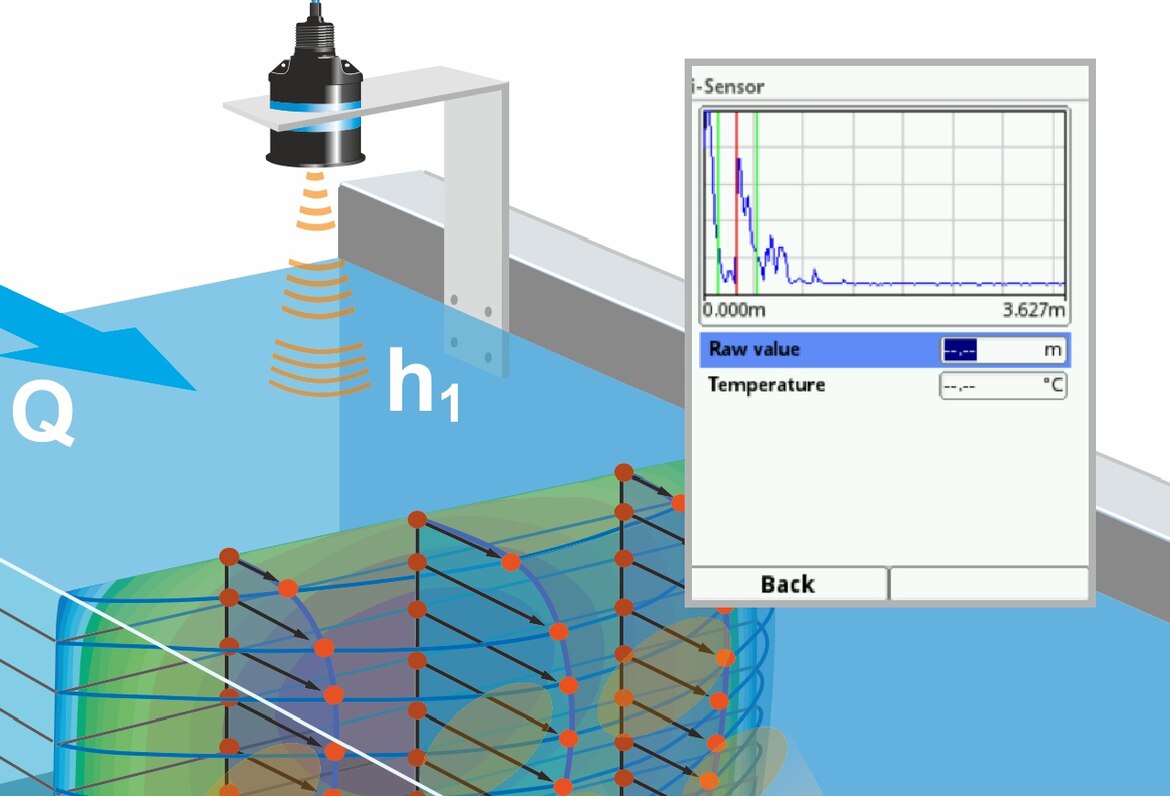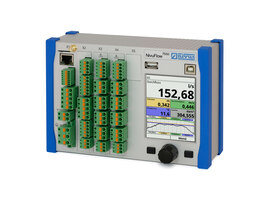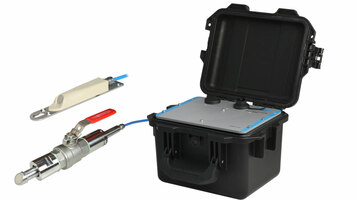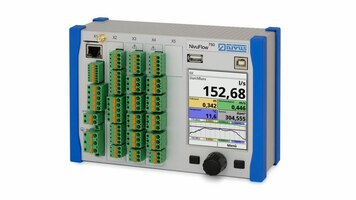
Flow Measurement using Ultrasonic Cross Correlation
Cross Correlation Method
- The measurement method for universal use in slight to heavily polluted media
- Very high measurement accuracy
- Measures the real flow velocity profile
Average flow velocity and flow cross section are required to determine the flow Q. This leads to the general formula:
Q = v (average) • A
The flow cross section A is determined by continuously measuring the filling level taking the channel shape as well as the channel dimensions into account. Most media contain a certain load of dirt particles or gas bubbles which move in the same velocity as the medium itself.
Your Benefits
- Highest measurement accuracy
- Stable and reliable readings
- No calibration required
- Extremely high measurement dynamics from lowest flow rates up to full filling
Flow Velocity Measurement (v) using Cross Correlation
The flow velocity determination method is based on the ultrasonic reflection principle.
One of the most modern and most efficient flow velocity measurement methods is the NIVUS correlation method. The reflecting particles contained within the medium (debris, minerals or gas bubbles) are scanned using an ultrasonic impulse transmitted in a defined angle. The resulting echo is then saved as image or echo pattern.
The positions of the reflecting particles is determined by correlating/comparing both saved signals. The particles can be found in different positions in both images since they move with the medium. Considering the beam angle it is possible to directly convert the temporal shift of the particles into their velocity which is equal to the flow velocity of the medium.
This allows gaining high accurate measurement values without calibration measures.
Functional Principle Cross Correlation
Level Measurement (h)
Accurate flow measurements require precise and reliable determination of levels under all hydraulic conditions. Based on our many years of experience we developed a multiply redundant level measurement system. The combination of hydrostatic measurement, water-ultrasound and air-ultrasound provides solutions for all measurement tasks.
Moreover external 0/4 - 20 mA level sensors such as „i-Series“-sensors or NivuBar Plus can be connected.
